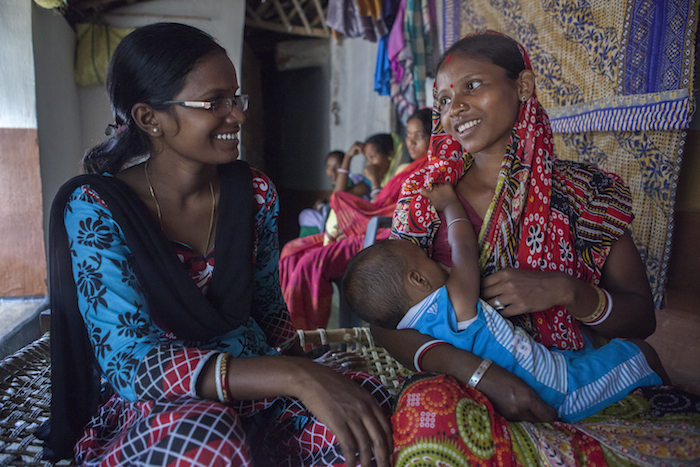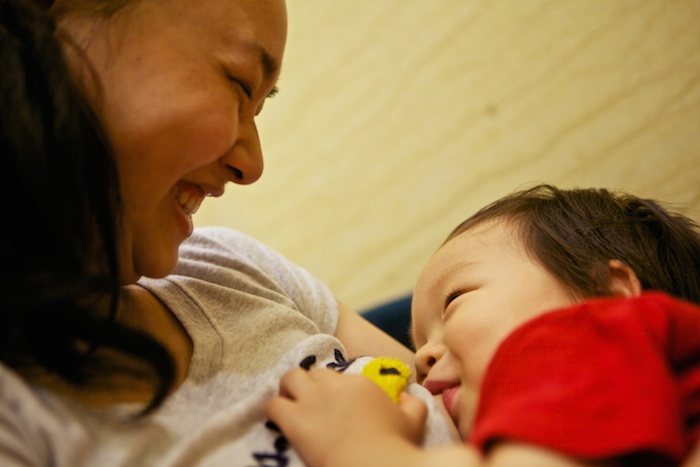The 10-year-old girl suffered from persistent asthma, but the cause was unclear. Tests ruled out everything from pet hair to cockroaches.
Then the girl's mother thought of a possible trigger.
“Her asthma does seem to get worse whenever her dad punches a hole in the wall," she told Dr. Nadine Burke Harris. "Do you think that could be related?”
Harris, a San Francisco pediatrician, includes the example in her new book, "The Deepest Well," to show the connection between what's known as "toxic stress" and physical health.
Medical professionals and researchers have long studied the effect of adverse childhood experiences (ACEs) and lifelong mental health and addiction. Now awareness is growing of the link between childhood trauma on long-term physical health.
The more ACEs a person suffers as a child – divorce, domestic violence, family members with addiction – the higher the risk of problems later in learning, mental and physical health, even early death.
That's because people with ACEs are more likely to experience “toxic stress” – repeated, extreme activation of their stress response.
Toxic stress affects the developing brain, the immune system, the cardiovascular system and the metabolic regulatory system, says Al Race, deputy director of the Center on the Developing Child at Harvard. It dramatically increases the risk of hypertension, heart disease and diabetes, among other costly health conditions.
Children with four or more ACEs are four times more likely to suffer from depression in their lifetimes, eight times more likely to become alcoholics and 20 times more likely to use intravenous drugs, research shows. Those who are exposed to very high doses of adversity without caring adults to help can have more than double the lifetime risk of heart disease and cancer and a nearly 20-year difference in life expectancy.
"There's a huge body of science that shows the connection between the early years of life with a wide range of health problems later in life," Race says. "Toxic stress allows us to understand why that relationship exists and how it can get inside developing biological systems in the body."
Given the stakes, researchers are scrambling to figure out how best to diagnose ACEs.
Researchers at Harvard, the University of California-San Francisco and other institutions are working on screening tools to detect the biological markers of toxic stress in children so they can detect it earlier and help parents mitigate the effects.
"There's no one accepted way to measure the effect of excessive stress activation," Race says. As with adults, he says, "every child reacts to stress differently."
The Center for Youth Wellness, founded by Harris, has launched a social media campaign and the new Stress Health website to share the science with parents. The National Pediatric Practice Community, a network of nearly 600 doctors organized by the center, is screening for ACEs and sharing ways to reduce their influence on mental and physical health.
Dr. Imelda Dacones is CEO of Northwest Permanente, the independent medical group that provides care to Kaiser Permanente members in the Northwest.
"More people are clamoring for government policy and health care organizations to provide trauma-informed care because the data is out there," she says. "The sad thing about ACEs is we've known about them since 1997, but there's been a lag in translating it to create a system to actually do something about it."
More than 20 million children have experienced three or more ACEs. Dr. Don Mordecai, the mental health leader for Kaiser Permanente, says children who experience multiple ACEs are at risk for toxic stress and the lifelong mental and physical health effects it can have.
Kaiser Permanente worked with the federal Centers for Disease Control and Prevention to produce the original study on ACEs more than 20 years ago.
About 25 percent of adults have experienced at least three or more ACEs.
In her book, Harris describes physical and emotional abuse as common for both the diverse patients at her low-cost clinic and the wealthy people in her area.
"I see it every day in my practice," Harris says.
She sees children who experience frequent infections, failure to grow well and learning disabilities.
The effect can start in infancy, Harris says, and is experienced by even sleeping babies who are in stressful environments.
One of the key ways parents can protect their children, she says, is by nurturing healthy relationships outside the home, especially if they experienced their own traumatic childhoods.
"All of the research is telling us that relationships are healing," Harris says. "Folks who have high levels of social support are more resistant to the flu and have better immune functioning."
Sleep, good nutrition, mindfulness and exercise also help.
Former Surgeon General Vivek Murthy, a primary-care physician, has made human connection for adults’ health his post-government priority.
Harris and Murthy, who have been friends for more than two decades, agree that positive relationships help adults become better parents.
When parents' friends are part of children's lives, Harris says, they can boost the child's "cumulative dose of therapeutic interaction."
We can't "choose the homes in which we grew up," Murthy says, but relationships with family and others outside the home can help parents and others heal from early trauma.
Murthy is writing a book on social isolation.
"I worry we have come so far in terms of medicine, technology and economic advancement but seem to have a growing amount of emotional pain," he says. To help people heal from childhood or current trauma, he says, "one of the most powerful ways we can do that is by cultivating strong connections."
More:
The CDC is continuing the work it started with Kaiser Permanente by occasionally monitoring the health of the 17,000 people it began studying in 1995.
The Northwest Permanente Medical Group is developing a health complexity score, incorporating medical complexity and social complexity scores, for children and families.
The social complexity score will be based on information from the Oregon state health and human services agency, which will track ACEs as children and families move through services for food, housing, financial help, or correctional facilities. The scores will be used to help connect people with social organizations.
Here are common signs of toxic stress in school-age children, according to the Center for Youth Wellness:
• Poor coping skills.
• Behavior and learning difficulties.
• Mood swings.
• Sleep problems.
• Overeating and other compulsive behaviors.
• Fear and anxiety triggered by places or people that remind them of past trauma.
Rahil Briggs is national director of HealthySteps, a pediatric program that works with parents and children to influence behavior to better prepare them for kindergarten, and founder of a pediatric psychology center at Montefiore Health System in New York. Montefiore is one of five medical sites working with Harvard on its biomarkers research.
When Briggs thinks of toxic stress, she thinks of two children, ages 7 months and 2 years, who were home in 2006 when their father killed a third sibling.
The infant couldn't sit up, and the toddler wouldn't speak at an age when kids should know 50 words and be able to string two together.
Worse yet, they both cried inconsolably. The older child would crawl under furniture when he wanted to soothe himself.
"This child was finely tuned to understand it's better just to retreat rather than to ask for help," Briggs says.
When children don't gain enough weight, or lose too much, they can be diagnosed with "failure to thrive." Briggs says the diagnosis is most often "related to the environment the child is growing up in."
Harris hopes her digital ad campaign will remind some parents of the danger their homes present for their children's long-term health.
In the video ads, a boy puts an ice pack on his sleeping mother's eye and cleans up liquor bottles around his father, who is sleeping on a couch.
He puts all the bottles into trash bags and stuffs them into an overflowing closet. He is shown opening the closet later in life.
Jabeen Yusuf heads public health education at the Center for Youth Wellness.
"For a lot of parents, they understand that if you’re hitting your child, it's harmful to their child," she says. "But they will say, 'I didn't realize the things they are witnessing could be harmful to their health.'"
Yusuf calls it the "myth of childhood amnesia."
"We have to create safe, stable relationships and sometimes leaving a dangerous environment is what’s going to be necessary," Harris says. "A lot of the times, moms in particular are willing to do for their children what they are not willing to do for themselves."
If you are interested in connecting with people online who have overcome or are currently struggling with the health problems mentioned in this story, join USA TODAY’s ‘I Survived It’ Facebook support group.
Original Article
Original Article










